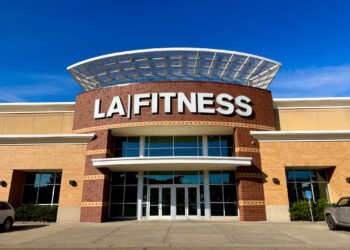Sometimes it is good to step outside of your comfort zone. With nearly 100 locations throughout the New Jersey and New York City metro area, Retro Fitness is a well-known fitness franchise within the northeast. But now, the brand is stepping outside of its core market and expanding its footprint with developments in California, Texas and Florida markets. The company’s goal is to develop each of these markets with a Retro Fitness club within every three to five miles.
According to Eric Casaburi, the CEO and founder of Retro Fitness, over the years national recognition for the Retro Fitness brand has grown. “We started to have candidates come from other parts of the country that said they loved our model and thought it would be great in their city,” said Casaburi. “We started to look at these different markets and did a tremendous amount of research on demographics, the market potential and the landscape of the industry in each particular market.”
Through this research, Casaburi and colleagues found that many of the markets they were investigating were in need of a great fitness brand. “We found there were a lot of voids in these markets, especially Orlando,” explained Casaburi. “We are coming to Orlando because we felt it is such an under-serviced market. Not underserved, but under serviced, meaning that there are gyms here, but in our assessment they do a poor job. We felt it was a completely open opportunity for us to come in and really give some great service.”
Retro Fitness was recently named the No. 1 Fitness Franchise in America by Forbes and top franchise over $500,000 by Franchise Times magazine. As Casaburi explained, this success can be attributed to the hard work of the entire Retro Fitness team.
“We go so far above and beyond what is required or even asked for from our franchisees, because we know how that affects their success,” he added. “We are a team that really focuses on how we can do more. How we can add value to each particular scenario? When you do that, it shows in the numbers.”
The company plans to open more than 25 locations by year-end and is on track to grow beyond 700 locations by 2020. But with such rapid expansion comes certain challenges. According to Casaburi, the biggest challenge so far has been finding the right location for each franchisee.
“As part of our service, we help identify qualified Retro Fitness sites and in certain markets it is tight, because there is not a lot of real estate left. The retail market is changing, so the inventory just three or four years ago is no longer available. After the recession, we were able to put a box almost anywhere and that is changing a little bit. So out biggest challenge has been getting our franchisees in their appropriate location.”
Despite this challenge, Casaburi has no plans to slow down growth. In fact, in 2016 the brand will release Retro 2.0. “It is converting our gyms into more of a training center,” said Casaburi. “We are still going to have our $19 model, but we are implementing a really awesome, trademarked workout that we have been internally working on for the last six months. I have hired some of the top minds in the personal training world, and we have put together a really sophisticated program that is going to be a great revolution to the Retro Fitness gyms. The member experience is going to go off the charts.”
Stay ahead in the fitness industry with exclusive updates!
Emily Harbourne is the former assistant editor of Club Solutions Magazine.










